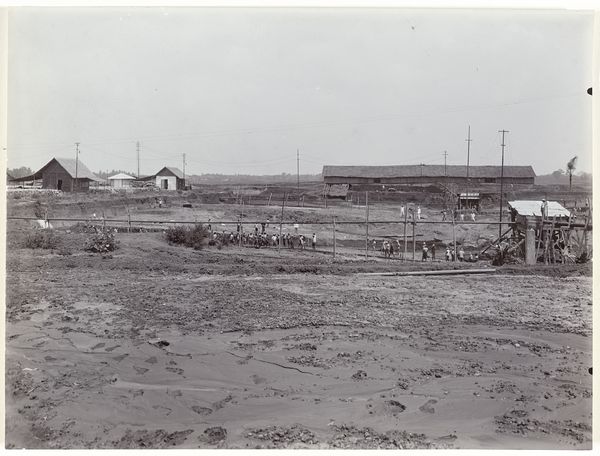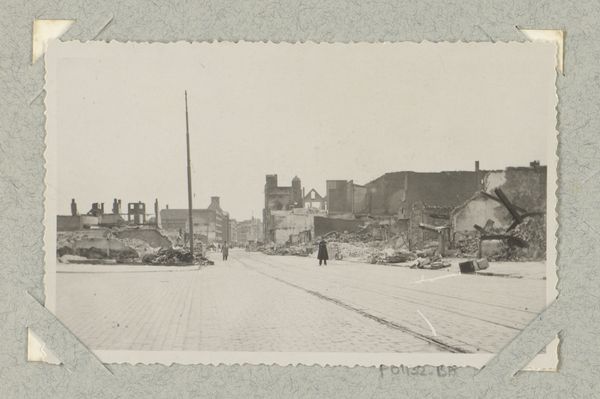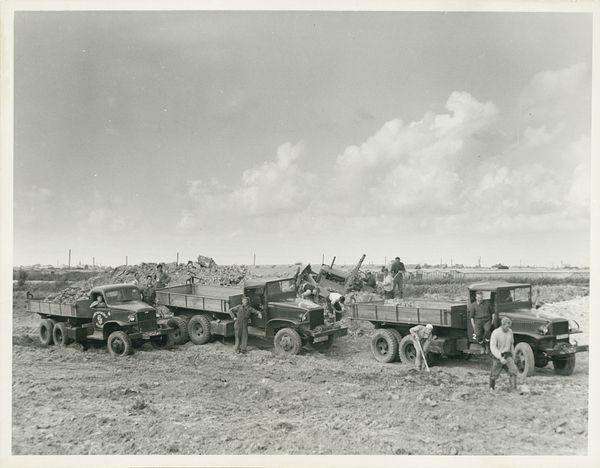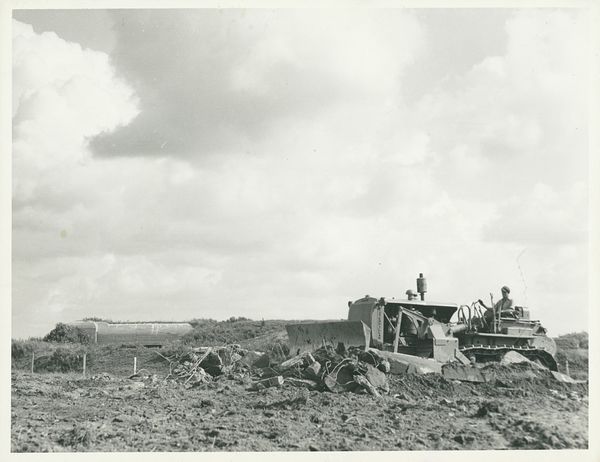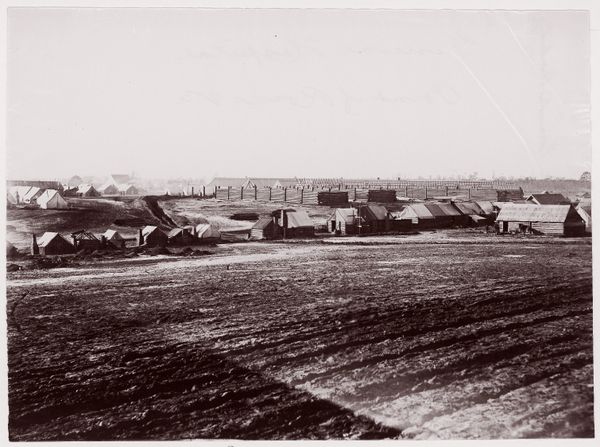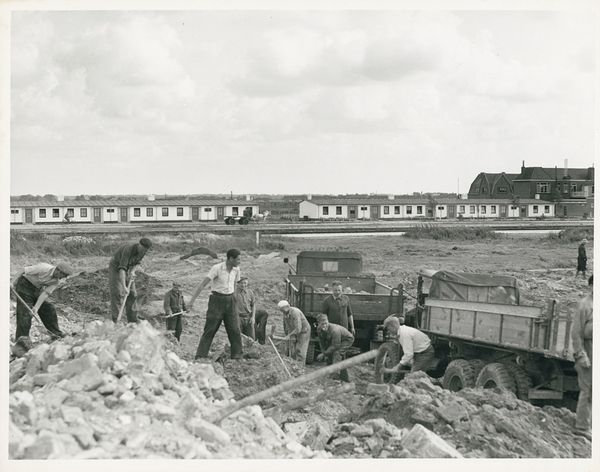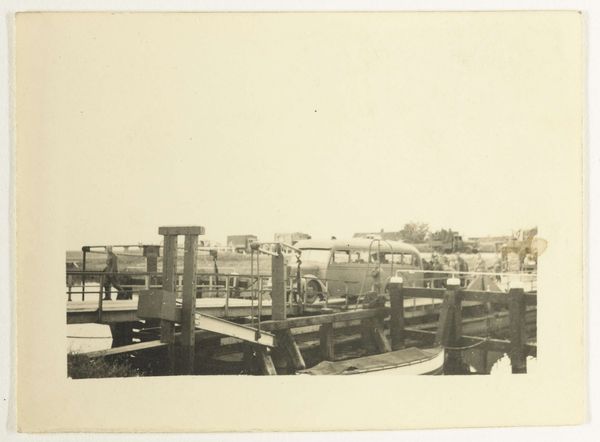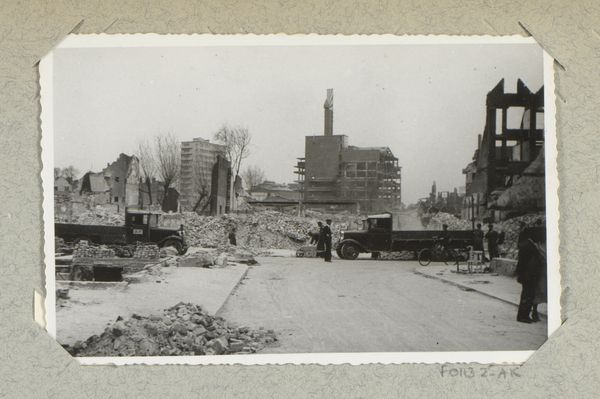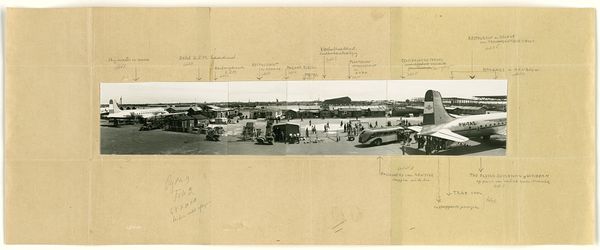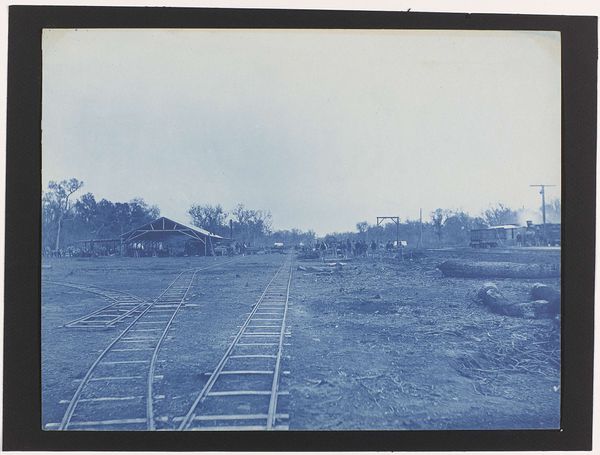
#
excavation photography
#
photo restoration
#
natural tone
#
countryside
#
outdoor photo
#
outdoor scenery
#
low atmospheric-weather contrast
#
outdoor activity
#
scenic spot
#
shadow overcast
Dimensions: width 21 cm, height 15 cm
Copyright: Rijks Museum: Open Domain
Editor: Here we have "Britse troepen passeren de brug bij Nijmegen," created sometime between 1944 and 1949. It's a photograph, and immediately striking for its somber mood. The scene feels both monumental with the bridge in the background and intimate with the destruction in the foreground. What resonates with you most when you look at this piece? Curator: The chaos, beautifully framed. It whispers stories, doesn't it? Each burnt-out vehicle, each abandoned bicycle a silent testament. This photograph isn't just about the troops, but the aftermath, the heavy quiet that descends after the storm. Do you notice how the bridge, a symbol of connection, looms in the distance, almost ethereal amidst the wreckage? Editor: Absolutely. There's a tension between the promise of the bridge and the reality on the ground. I am drawn to the contrast. Curator: That tension, that dissonance is the point, I think. It is as if the photographer captured not just a scene, but the palpable anxiety and cautious optimism hanging in the air. There's an acceptance of reality, but a reaching toward the horizon. The shadow, however, does remind one to look behind one's self as you charge on. How does this affect your personal view? Editor: I now view this as a snapshot, capturing a fragment in time. I never considered optimism as part of a chaotic period, like the image expresses. I now reflect differently on these kinds of historical artworks. Thanks for opening my eyes to this historical narrative. Curator: It is beautiful to witness a transition in someone. If you find this insightful, you must keep that inquisitive part of your heart open and searching.
Comments
No comments
Be the first to comment and join the conversation on the ultimate creative platform.

